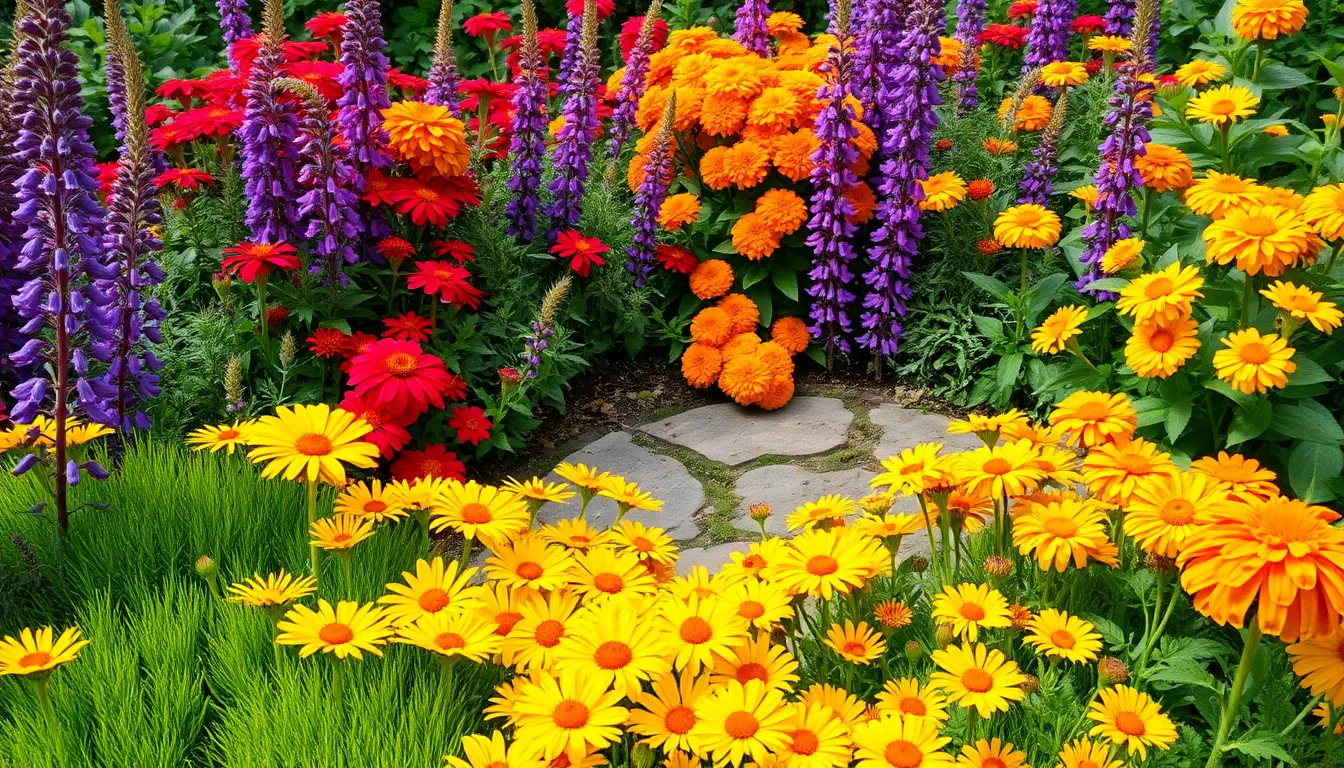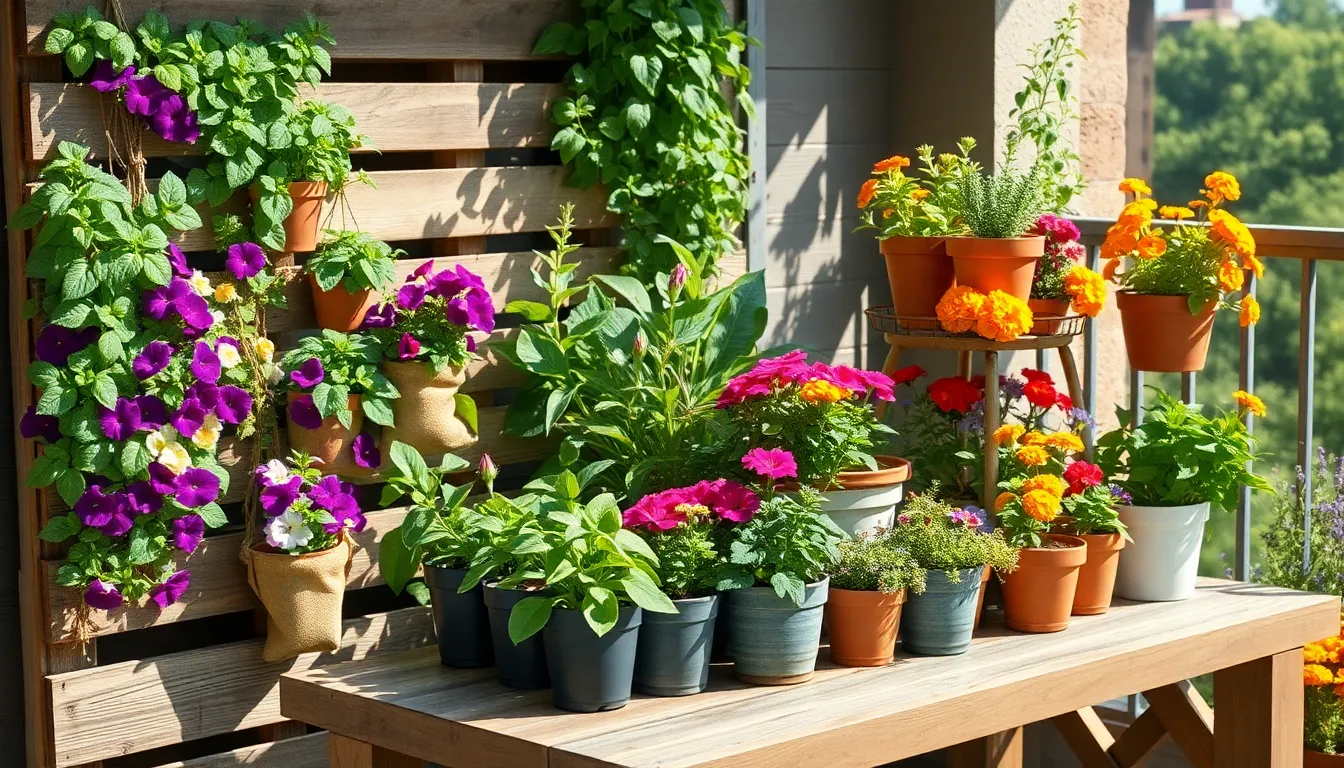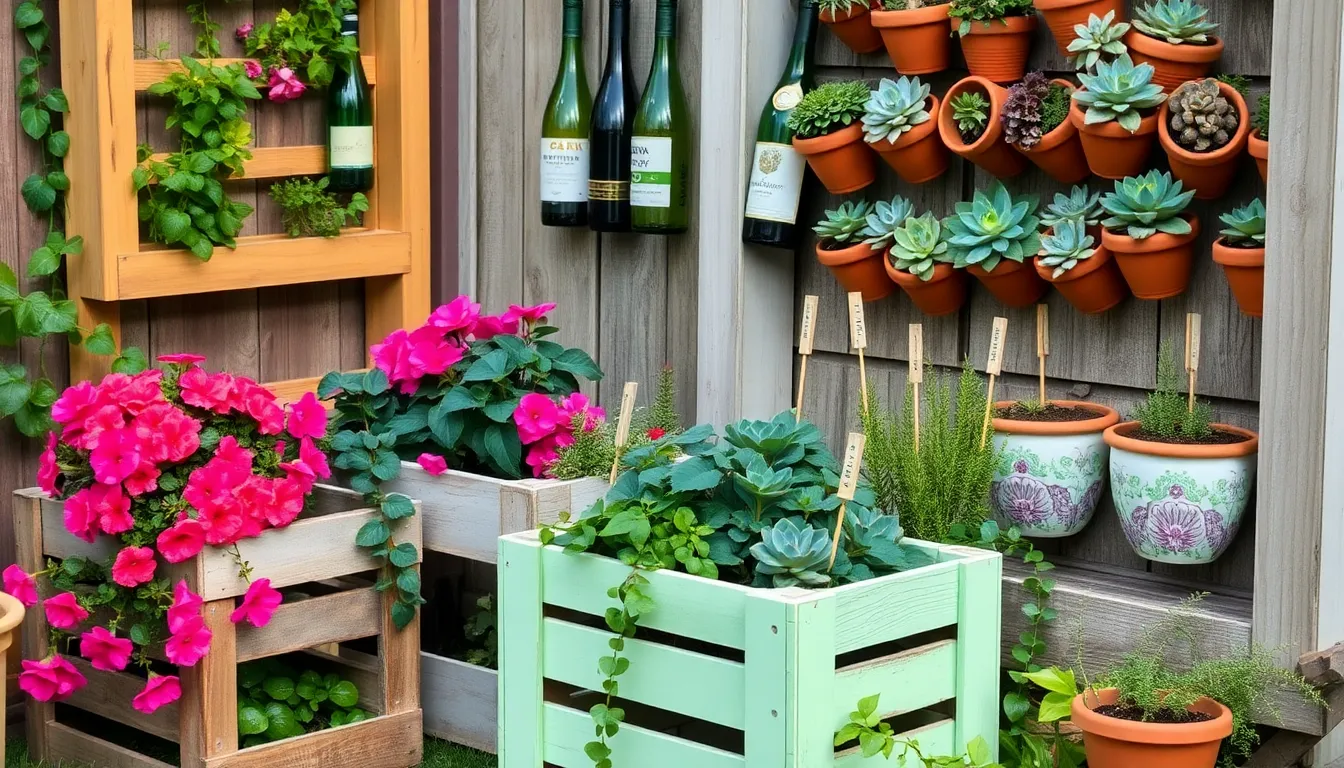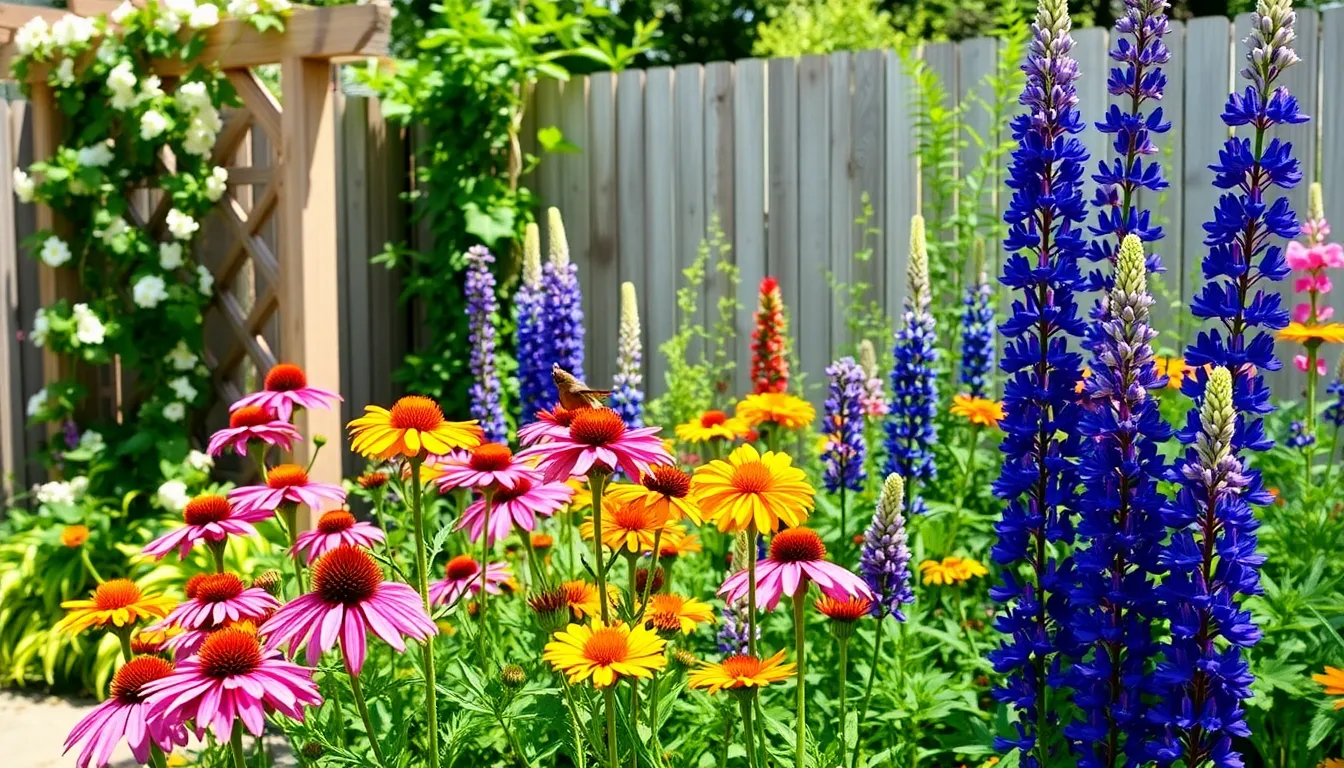Imagine stepping into your garden and being greeted by a vibrant palette of colors that change with the seasons. Whether you’re a seasoned gardener or just starting your green journey, creating a colorful outdoor space can transform your garden into a dazzling oasis of beauty and tranquility. Plants are not just about aesthetics; they have the power to uplift our spirits and bring life to our surroundings. In this article, we will explore ten stunning outdoor plants that can infuse your garden with vibrant hues and captivating textures, making it a feast for the eyes and a haven for pollinators.
Every gardener knows that the right selection of plants can dramatically enhance the visual appeal of any outdoor space. From the bold reds of flowering bushes to the delicate blues of perennial blooms, each plant has its own unique way of contributing to your garden’s color scheme. Whether you’re looking to create a rainbow of colors or a more subtle, harmonious palette, you’ll find plenty of inspiration here. We will delve into not only which plants to choose but also how to care for them, ensuring they thrive in your garden’s specific environment.
For those new to the world of gardening, don’t worry—this guide is crafted to make the process simple and enjoyable. You’ll discover practical tips and tricks to help your plants flourish, regardless of your gardening experience. For the more experienced gardener, there are fresh ideas and plant combinations to challenge your creativity and expand your horticultural repertoire. So, prepare to dig in and learn how to cultivate a garden that bursts with color and life, bringing joy to you and all who visit.
Choosing Vibrant Garden Varieties
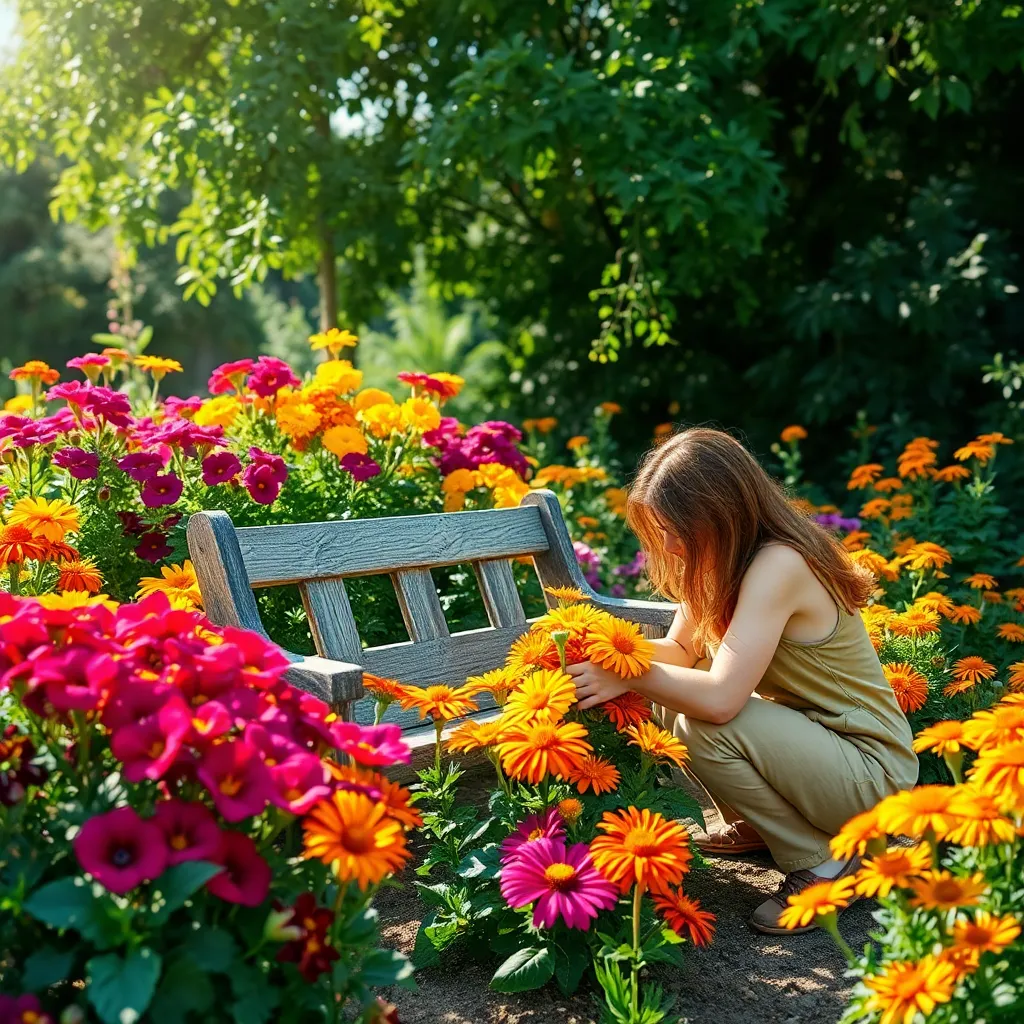
When selecting vibrant garden varieties, consider plants that offer a range of colors throughout the growing season. It’s essential to choose species that thrive in your specific climate and soil conditions to ensure a successful and lively display.
Start by assessing the light conditions in your garden, as some plants require full sun, while others prefer shade. For sunny spots, consider planting species like zinnias and calendula, which bloom profusely under direct sunlight.
To achieve a vibrant palette, opt for plants with varied bloom times and complementary colors. Mixing perennials like coneflowers with annuals such as petunias can extend the flowering period and enhance garden diversity.
Soil quality plays a critical role in plant health, so start with a rich, well-draining soil mix. Amend your soil with organic matter like compost or aged manure to provide essential nutrients and improve texture.
Additionally, proper watering techniques help maintain vibrant blooms. Water deeply but infrequently, allowing the soil to dry out slightly between watering to prevent root rot and encourage robust root systems.
For those seeking advanced tips, consider planting in layers to create depth and interest. Use taller plants like sunflowers at the back, mid-height plants such as salvias in the middle, and low-growing varieties like alyssum at the front for a well-structured garden.
Sun-loving Blooms for Bright Spaces
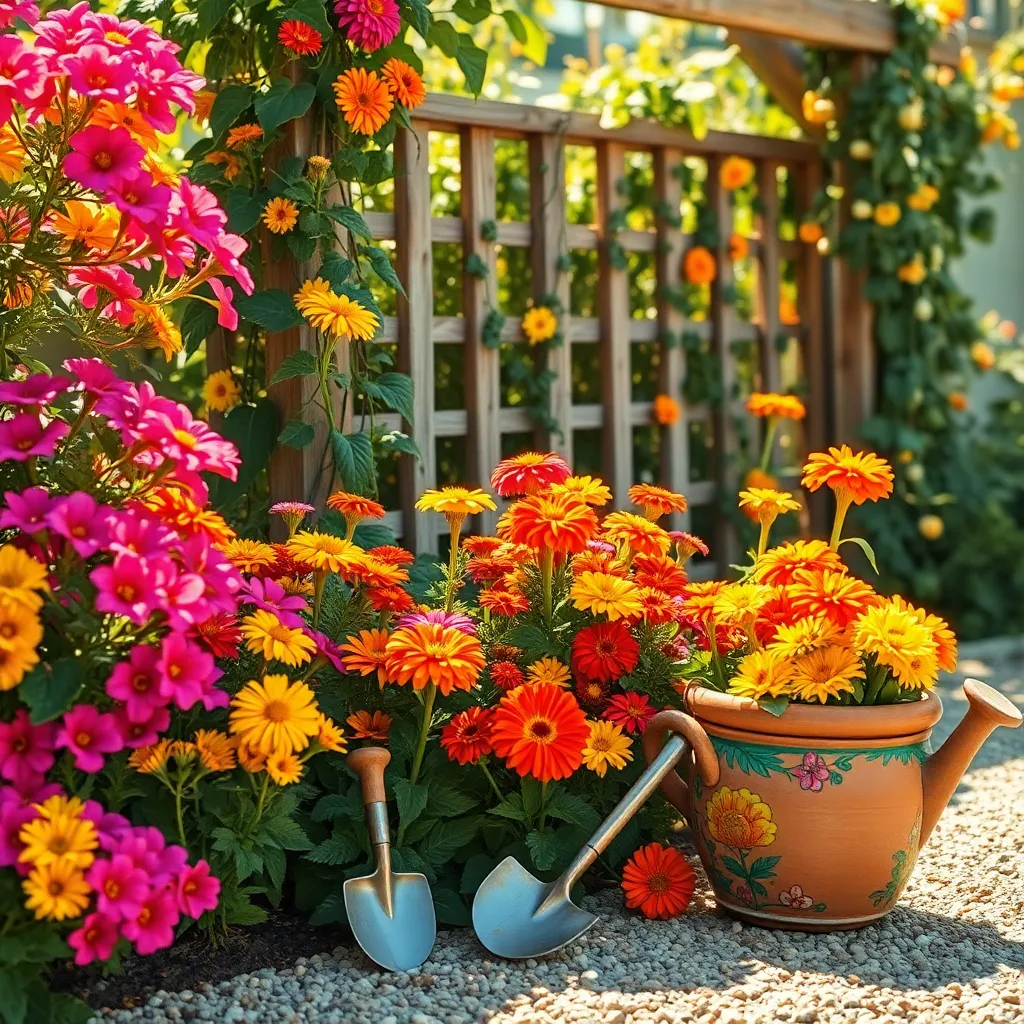
Sun-loving blooms are a wonderful addition to any garden space that receives abundant sunlight throughout the day. These plants thrive in bright areas and can transform your garden into a vibrant exhibition of colors.
Consider planting geraniums for their hardy nature and vivid hues, making them perfect for sunny spots. They require well-draining soil and benefit from regular deadheading to encourage continuous blooming.
Also, think about adding some lavender, which not only brings an aromatic touch but also attracts pollinators like bees and butterflies. Lavender prefers sandy or gravelly soil and should be watered deeply but infrequently to prevent root rot.
For advanced gardeners, try incorporating hibiscus plants, which offer large, showy flowers in a variety of colors. Ensure they receive at least six hours of sunlight and provide a balanced fertilizer during the growing season to maximize their blooming potential.
Shade-tolerant Beauties to Consider
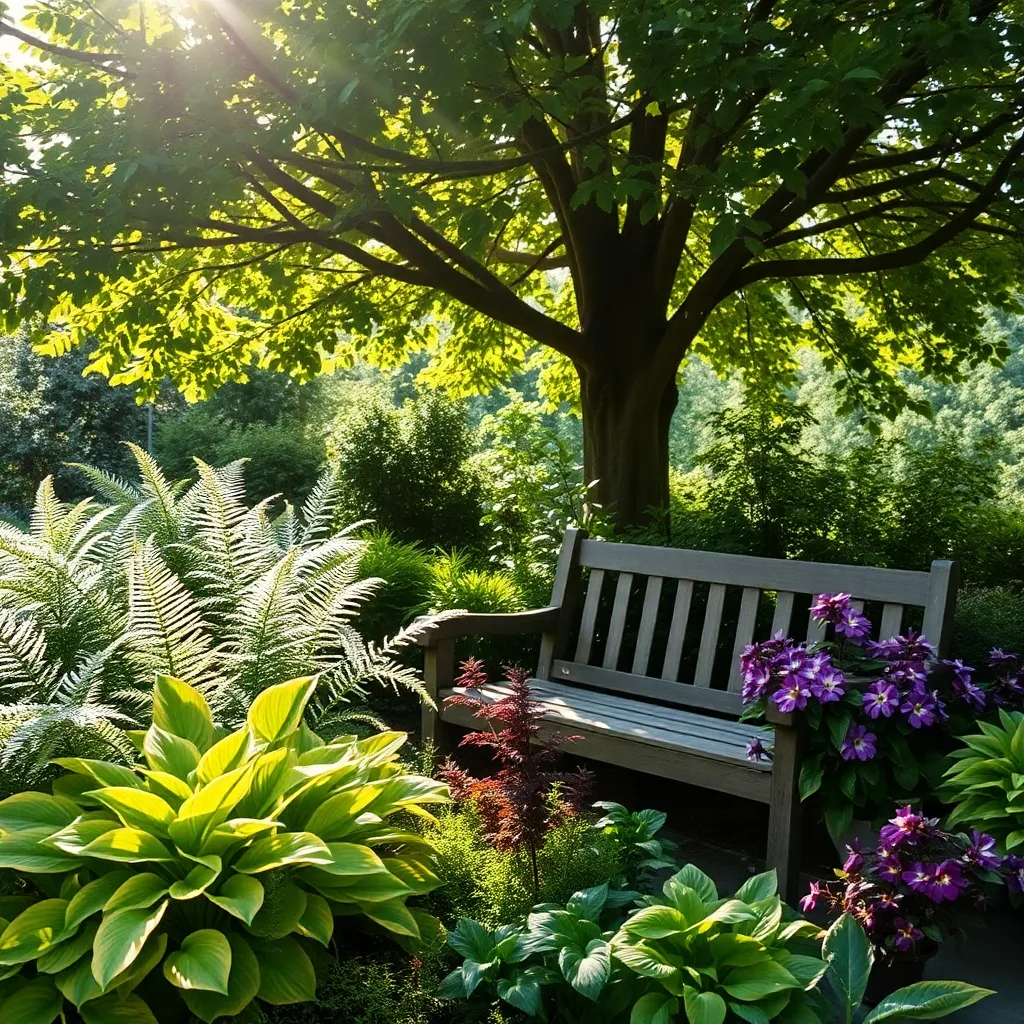
Shade-tolerant plants are perfect for those tricky garden spots where sunlight is scarce. Ferns, for example, thrive in shaded areas and add a lush, tropical feel to your garden. To ensure healthy growth, plant them in well-draining, rich soil and keep the soil consistently moist. Water ferns regularly, especially during dry spells, but avoid waterlogging.
Another excellent choice for shade is the Hosta, which is renowned for its striking foliage. Hostas prefer nutrient-rich, slightly acidic soil and require regular watering to maintain vibrant leaves. Applying a layer of mulch around the base helps retain moisture and suppress weeds. For optimal growth, divide hostas every few years to prevent overcrowding.
Astilbes are ideal for adding a burst of color to shaded areas with their feathery plumes. These plants thrive in moist, well-draining soil and appreciate a bit of morning sun. Fertilize astilbes in early spring with a balanced, slow-release fertilizer to promote vigorous blooms. Deadheading spent flowers encourages a tidy appearance and can prolong the blooming period.
For those seeking a hardy ground cover, consider Lamium, known for its silvery foliage and delicate blooms. It flourishes in partially shaded areas and requires minimal maintenance once established. Ensure the soil is well-draining and water sparingly, allowing the surface to dry out between waterings. Lamium also benefits from occasional trimming to maintain a neat and compact form.
Perennial Favorites for Year-round Color
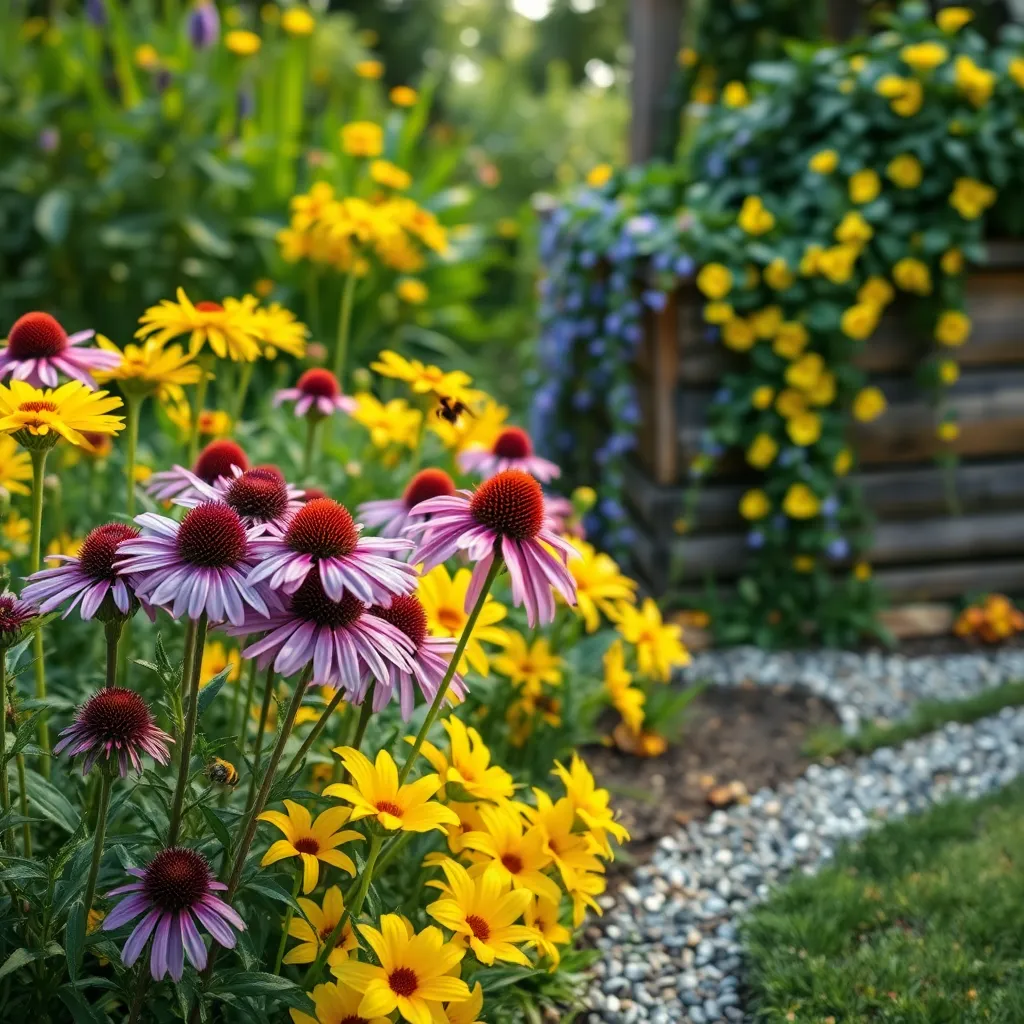
For a garden that bursts with color throughout the year, consider incorporating perennials that offer this vibrant display. Perennials like Echinacea and Coreopsis are fantastic choices because they provide continuous blooms and require minimal maintenance once established.
When planting perennials, it’s important to choose the right location and soil type. These plants generally thrive in well-drained soil with plenty of sunlight, though some can tolerate partial shade for part of the day.
Watering needs can vary significantly among perennials, but a general rule of thumb is to water deeply once a week. Mulching around the base of these plants helps retain moisture and suppress weeds, making your maintenance routine easier.
For those looking to expand their skills, consider dividing your perennials every few years to promote vigorous growth and prevent overcrowding. This can be done in early spring or fall, depending on the plant species, and it offers an excellent opportunity to propagate new plants for your garden or to share with friends.
Annuals for Seasonal Splash
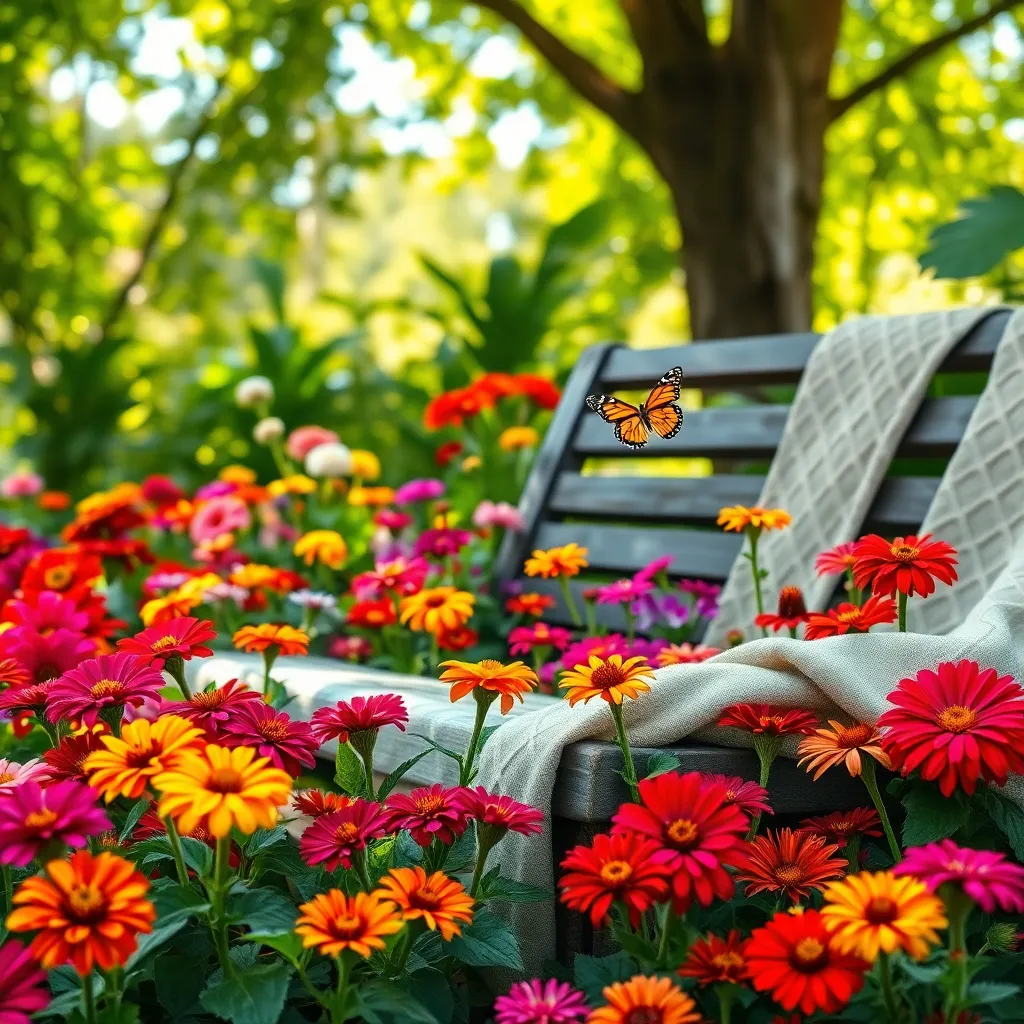
Annuals offer a vibrant splash of color that can transform any garden from ordinary to extraordinary. These plants are perfect for gardeners who love to experiment with different color schemes each year. Marigolds, for instance, are hardy annuals that thrive in well-draining soil and full sun, making them a popular choice for brightening up garden beds. They require regular watering, particularly during dry spells, to maintain their lush blooms.
For a touch of elegance, consider planting Impatiens, which are ideal for shaded areas. These annuals need consistently moist soil, so water them deeply but less frequently to encourage deep root growth. Petunias are another fantastic choice, offering a wide range of colors and patterns. They perform best in sunny locations and benefit from a bi-weekly dose of liquid fertilizer to keep their blooms prolific throughout the season.
Advanced gardeners might want to try growing Zinnias, which are known for their resilience and minimal care requirements. These sun-loving plants need a space with good air circulation to prevent mildew, and deadheading spent flowers will encourage continuous blooming. For those looking to attract pollinators, Cosmos are an excellent option, requiring only occasional watering once established. Their tall, airy stems add a lovely backdrop to any garden while drawing in bees and butterflies.
To truly make the most of annuals, consider succession planting to extend the blooming period well into the fall. By staggering your planting schedule, you can enjoy fresh bursts of color as earlier blooms fade. Always pay attention to your local climate and frost dates to time your plantings appropriately. With a bit of planning and care, annuals can provide an ever-changing tapestry of color and texture in your garden.
Fragrant Options for Sensory Appeal
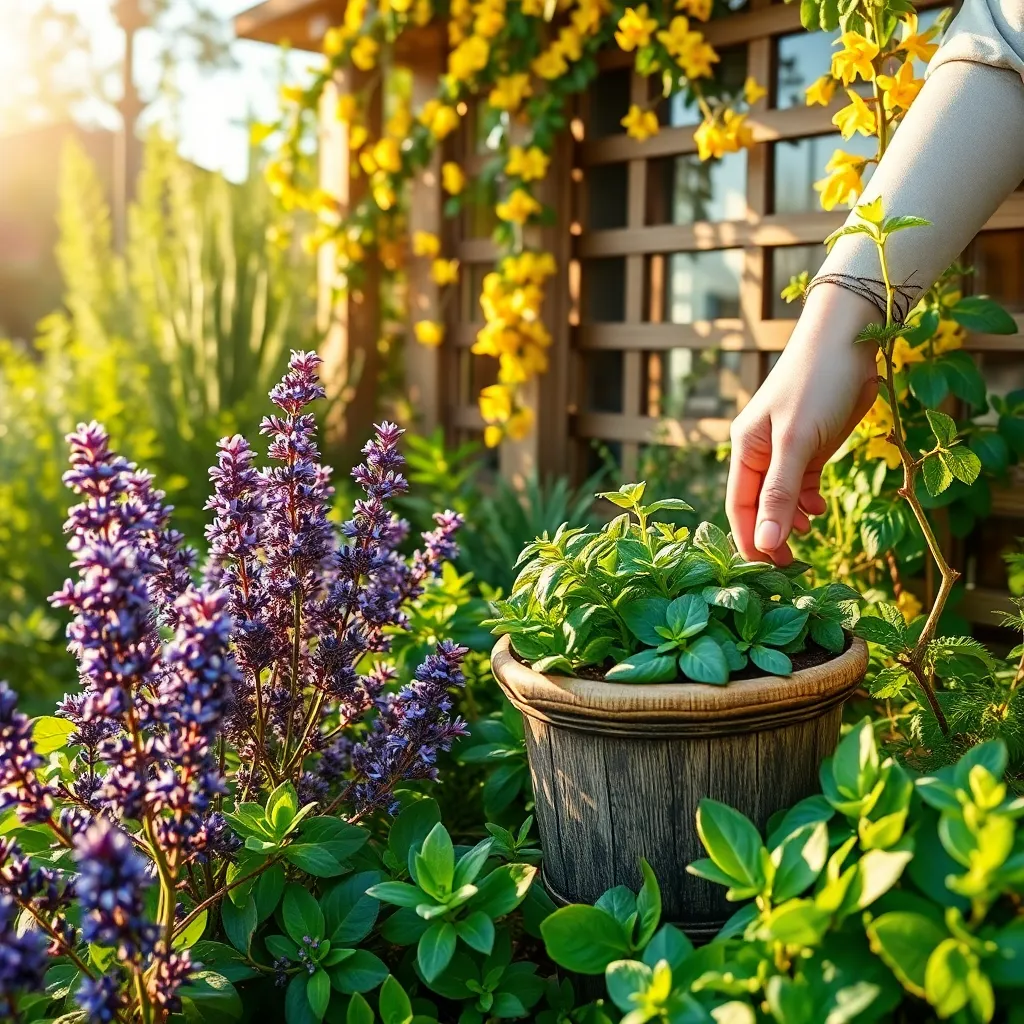
To add a sensory delight to your garden, consider incorporating fragrant plants that will captivate with their aroma. One excellent choice is the lavender plant, known for its soothing scent and beautiful purple blooms. Lavender thrives in well-draining soil and requires plenty of sunlight, making it ideal for sunny garden spots.
Another aromatic option is the jasmine vine, which produces small, star-shaped flowers with a sweet fragrance. Jasmine prefers a sheltered spot with partial to full sun and needs regular watering during its growing season. To encourage blooming, fertilize jasmine with a balanced fertilizer in the spring.
Gardeners seeking a classic scent should consider the gardenia, which offers creamy white flowers and a rich fragrance. Gardenias thrive in acidic, well-drained soil and require consistent moisture, but take care to avoid waterlogging. Prune gardenias after flowering to maintain their shape and promote new growth.
For a fragrant ground cover, try thyme, an herb that releases a delightful aroma when brushed against. Thyme prefers full sun and well-drained soil, making it perfect for rock gardens or borders. Harvest thyme regularly to encourage bushy growth and enhance its aromatic qualities.
Low-maintenance Picks for Busy Gardeners
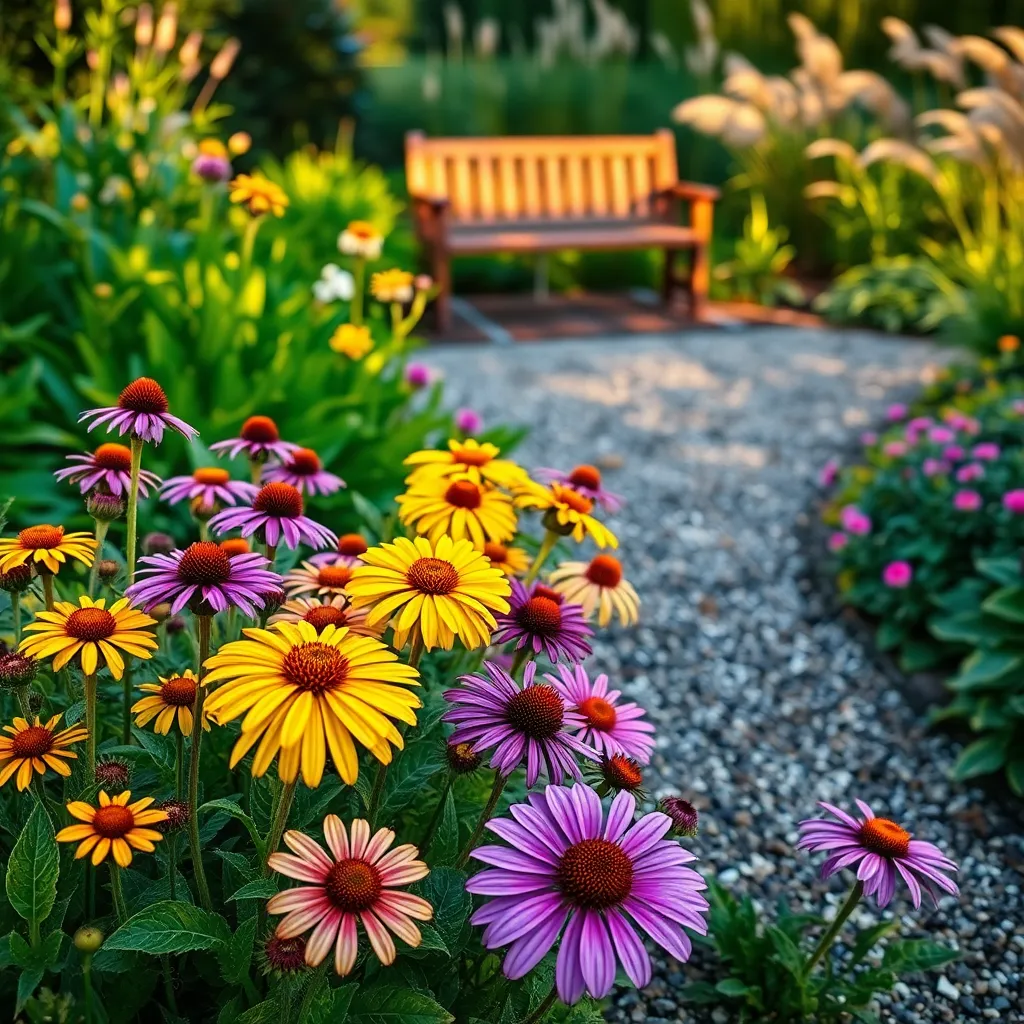
For busy gardeners seeking low-maintenance choices, sedums are a fantastic option. These resilient succulents thrive in well-draining soil and minimal watering, making them perfect for those with hectic schedules.
Another excellent choice is the lavender plant, known for its fragrant blooms and drought tolerance. Simply plant it in a sunny spot with sandy soil, and it will reward you with beautiful purple flowers all summer long.
Consider planting daylilies, which are known for their hardiness and ability to bloom in various climates. These perennials require little attention; just ensure they get full sun and occasional watering during dry spells.
To add a splash of color with minimal effort, try coral bells. These plants do well in partial shade and prefer moist, well-drained soil, providing vibrant foliage throughout the year.
Attracting Pollinators with Flowers
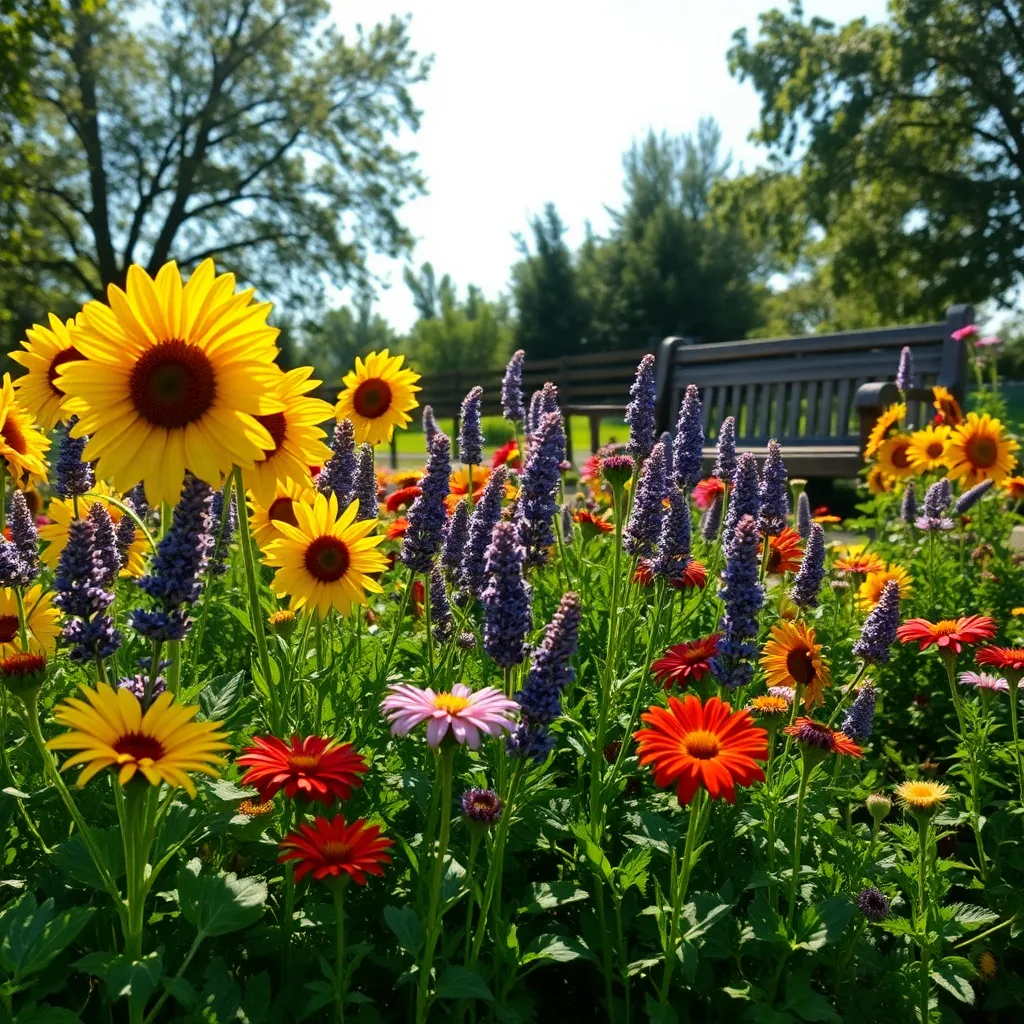
Attracting pollinators to your garden is both rewarding and beneficial for your plants. By selecting the right flowers, you can create a vibrant ecosystem that supports bees, butterflies, and other pollinators.
Start by choosing flowers with a variety of colors and bloom times to ensure a continuous food source for pollinators. Native flowers are especially effective because they co-evolved with local pollinators, making them a natural magnet for these creatures.
Consider planting lavender, which is a favorite for bees, thanks to its fragrant purple blossoms that bloom throughout the summer. Lavender thrives in well-drained, sandy soil and requires full sun, making it a low-maintenance choice for most gardens.
Incorporate coneflowers (Echinacea) to draw butterflies and bees with their bright, daisy-like flowers. These hardy perennials prefer loamy soil and can withstand drought, making them perfect for beginners seeking minimal care plants.
Advanced gardeners might experiment with companion planting techniques to optimize pollinator attraction. By planting a mix of species with different bloom heights and shapes, you’ll create a diverse habitat that appeals to a wider range of pollinators.
Color Combinations to Inspire
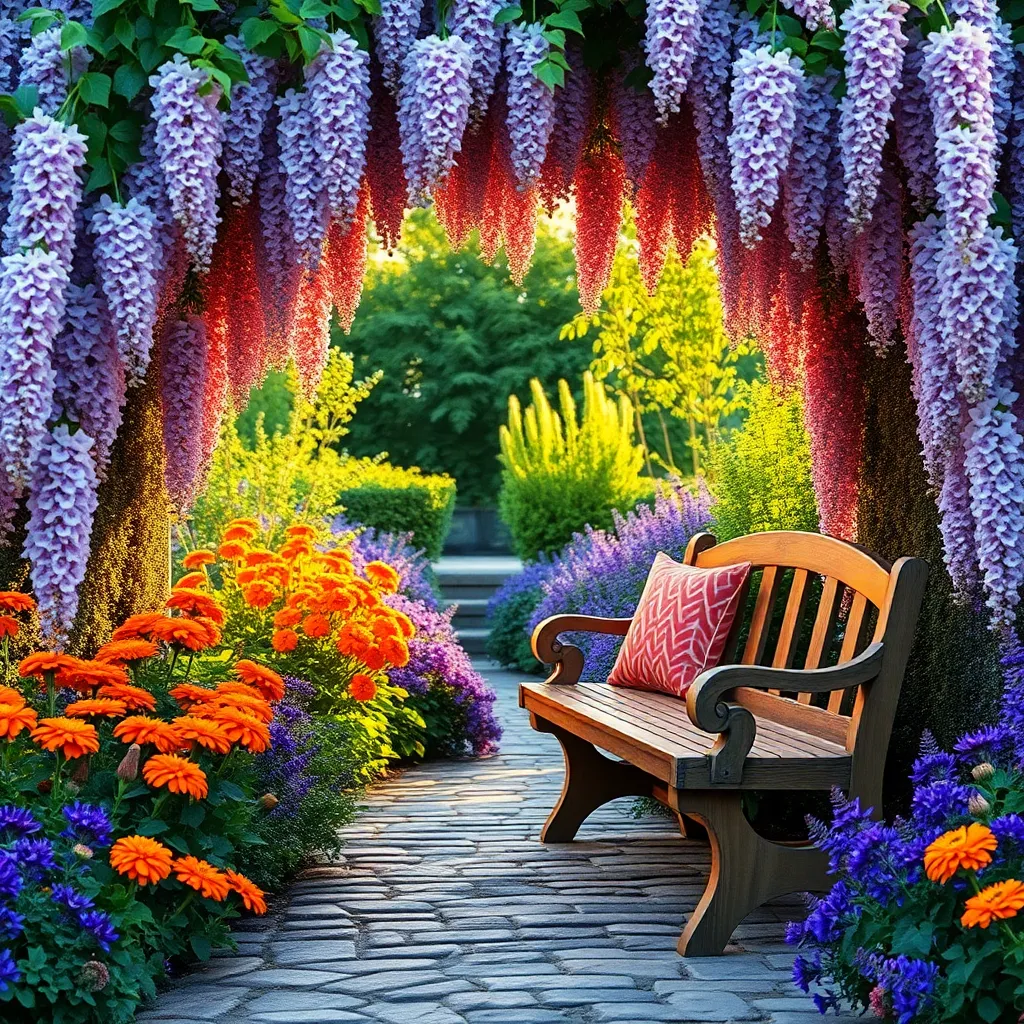
Pairing colors in your garden can create a vibrant and harmonious look. Start by combining **complementary colors**, such as the bright reds of geraniums with the cool blues of lobelia, to create an eye-catching contrast.
Consider the **textures and heights** of the plants as well as their colors. Taller plants like foxgloves can serve as a stunning backdrop, while shorter, bushier plants such as marigolds fill out the foreground with their golden hues.
To maintain a cohesive look throughout the seasons, choose plants that bloom at different times. **Perennials like coneflowers** provide a steady display of color, while annuals such as petunias can be swapped out for fresh bursts of color as needed.
For those with a more advanced interest, experiment with **monochromatic schemes** using various shades of a single color. This can be achieved by planting different varieties of dahlias or roses, which offer a wide range of shades from pastel pink to deep burgundy.
Caring Tips for Thriving Plants
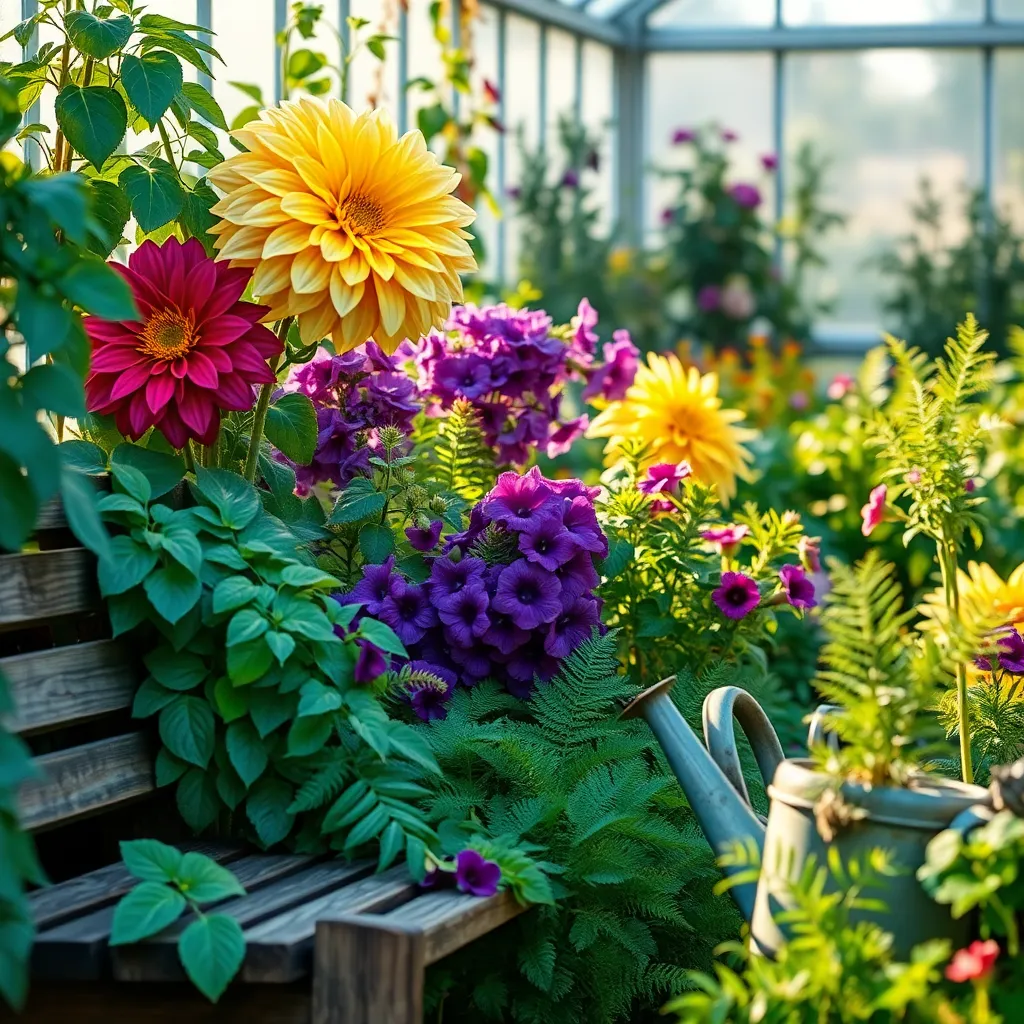
To ensure your garden plants thrive, start by understanding their specific soil requirements. Most outdoor plants prefer well-draining soil; however, it’s essential to research your plant’s needs as some may require more moisture retention.
Watering is another critical aspect of plant care that varies significantly among species. While some plants thrive with weekly deep watering, others might need more frequent hydration, especially during hot weather.
Sunlight exposure is crucial, so evaluate the light conditions in your garden before planting. Many flowering plants need at least six hours of direct sunlight each day, while shade-loving varieties will appreciate dappled or indirect light.
To encourage robust growth, consider feeding your plants with the right nutrients. Use a balanced fertilizer during the growing season and adjust the formula based on specific plant needs, such as high-phosphorus for blooming plants.
Pruning is an advanced technique that can greatly benefit your garden’s health and appearance. Regularly remove dead or diseased branches to promote air circulation and encourage new growth.
Integrating mulch into your garden care routine can help conserve moisture and suppress weeds. Organic mulch like shredded bark or leaf mold not only improves soil quality but also provides a neat, professional look to your garden beds.
Conclusion: Growing Success with These Plants
In exploring the vibrant world of outdoor plants, we’ve uncovered ten stunning varieties that promise to bring a pop of color and life to any garden. From the resilient Geraniums and cheerful Marigolds to the elegant Hibiscus and playful Zinnias, each plant embodies a unique relationship dynamic—persistence, joy, elegance, and spontaneity. These plants serve as metaphors for nurturing relationships, reminding us that diversity, attention, and care are keys to flourishing connections.
As you embark on your gardening journey, consider which plant best reflects the qualities you wish to cultivate in your relationships. Your actionable next step is to select one of these plants and plant it as a symbol of commitment to nurturing your bonds.
Remember, relationships need continuous care and attention, much like these plants. Bookmark this article now to revisit these powerful insights and refresh your inspiration as you tend to your personal garden of relationships. As you invest in these green companions, envision the blossoming of your connections—strong, colorful, and full of life. By embracing the vitality of these plants, you’re sowing the seeds for enduring relationship success. Save this article to ensure these insights remain at your fingertips, guiding you toward a vibrant future together.

